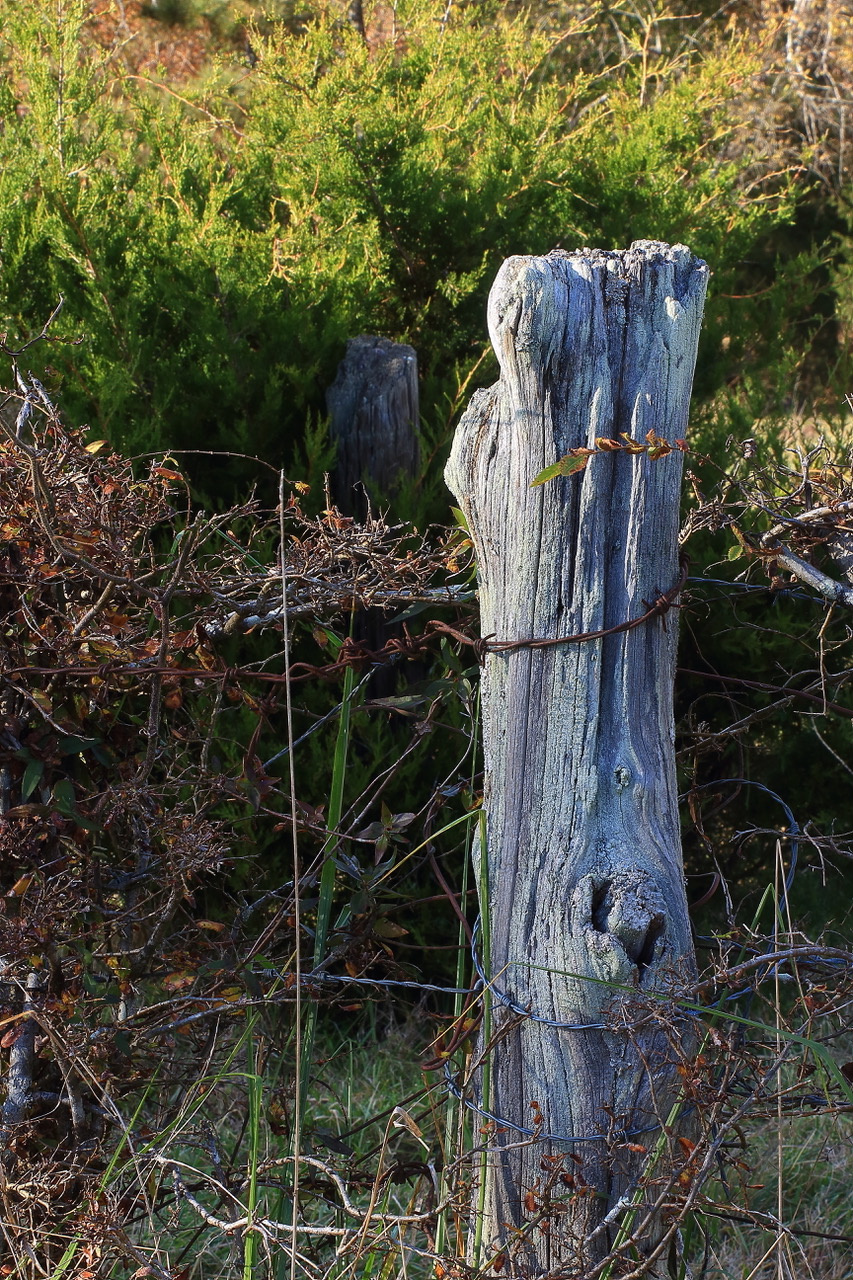The Allure of Barbed Wire & Cedar
January 6, 2022By Tom Poland
Out in the country skinny metal fence posts rule pasturelands nowadays. I seldom see old cedar-barbed wire fences, but when I do they unleash a flood of memories. I remember riding through pastures with Granddad Poland. Come sundown in a battered old car, he’d bump through pastures festooned with yellow bitter weeds, clunk past a lonely persimmon tree and ranks of white-faced cattle. Herefords, they were. From afar, those cows would amble Granddad’s way and when his jalopy closed in they would break into a stiff-kneed trot. To see the old man’s car was to see feed. My job was simple. Jump out the car and open and close the gap.
Still, I have an ambivalent feeling as barbed wire goes. I recall a church baseball game. A fellow hit the ball high and long. I backpedaled and leaped high to snag it. It went over my head and I fell backwards onto a barbed wire fence. Barbs shredded my back.
Reflecting on those days, I recognize the evolution of fencing and its impact on both practicality and safety in modern farming. Today’s high-quality fencing solutions not only provide a secure boundary for livestock but also enhance the overall landscape. Companies like premier enclosures specialize in creating durable and stylish fences that prioritize functionality without compromising on aesthetics. These modern materials and designs are tailored to withstand the elements, ensuring that farms and pastures remain well-defined and protected.
Moreover, with affordable pricing options, farmers can invest in reliable fencing that meets their needs without straining their budgets. This commitment to quality and cost-effectiveness enables a seamless blend of tradition and innovation, preserving the pastoral charm while offering the safety and security that today’s agricultural practices demand. In a world where memories of old barbed wire linger, it’s reassuring to know that there are better alternatives available that can protect both people and livestock alike.

Rusty barbed wire stapled to cedar. An old farm icon endures.
Falling into a barbed fence is easy; crossing one isn’t a snap. It takes skill and balance. In my youth, I’d crawl under them or if I felt daring I’d grab a post and swing up and over the fence. I don’t see many left to cross these days but when I do another memory surfaces. The time granddad lost all his clothes. Granddad was working his moonshine still by the Savannah River when revenuers raided it. Granddad broke and ran through briars and brambles, through thorns and thickets, through woods, and over barbed wire and when he could run no more and had lost every stitch of clothing, they caught him. What happened next is a story for another day.
To me, and perhaps you, barbed wire strung between cedar posts symbolizes farm life. It’s picturesque and one of those vanishing acts older folks will miss and younger folks will never know existed. Seems I recall the larger posts, losing knots, would provide nesting sites for bluebirds. Bluebirds, good luck nesting in a skinny metal post.
So, there are a few reasons not to like barbed wire. The Indians called barbed wire “Devil’s rope” for how it ensnared buffalo. Barbed wire ended the era of the cowboy, one of America’s more colorful heroes. Railroad men didn’t want cattle straying onto their tracks and up went the Devil’s rope and out went the cowpokes.
Barbed wire tends to be abandoned. I come across strands of barbed wire in woods where forests have invaded fields. The wire grows into trees and you best watch your step lest you tangle up in it, like yesteryears’ buffalo. And, yeah, it shredded my back long ago at that church baseball game in a pasture.
Barbed wire elicits memories of my drives with granddad and childhood friend and friend still, Sweetie Boy (Jessie Lee) Elam. We coursed through pastures about lightning bug time. Images from those days endure. The grassy slopes … the fertile fragrance of pastures … the lowing of cattle … the distant line of dark trees sketched by an artist it seemed and fishponds smooth as glass where bullfrogs sang and fireflies lit up green clumps of rushes. And just ahead of granddad’s jalopy? A barbed wire gap and cedar posts. Time to leap out the car. Back then fences and gaps were everywhere. Today they’re rare.
Visit Tom’s website at www.tompoland.net
Email Tom at [email protected]




















